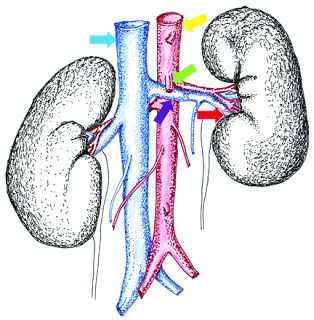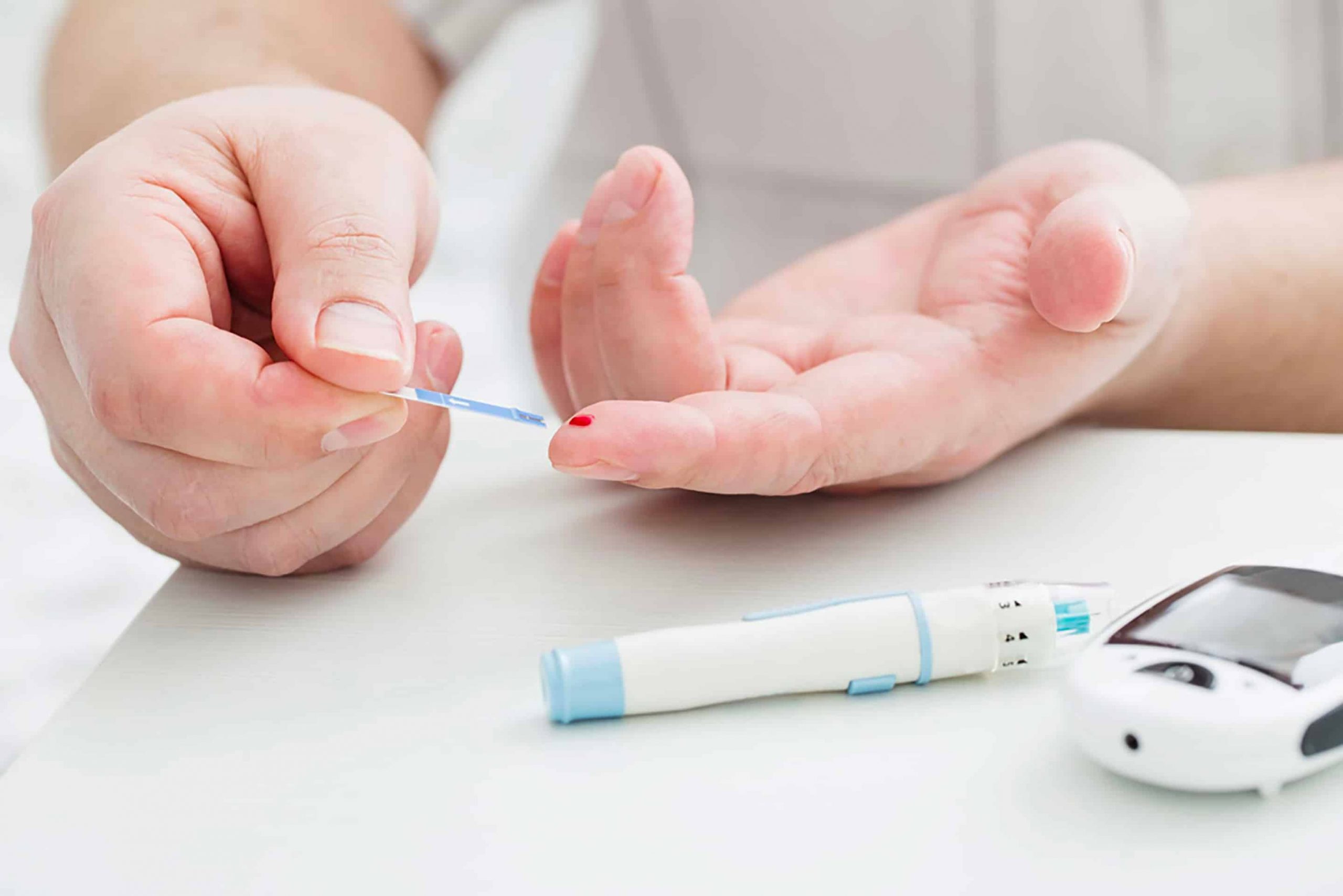Topics Covered
Introduction
The nutcracker syndrome causes compression of the left renal vein by the arteries near the kidney. The left renal vein normally helps in bringing blood out of the left kidney and sends it to the vena cava, largest vein of the body. When nutcracker syndrome causes the compression of the left renal vein, it tends to force the blood backward that leads to its flowing into other veins, resulting in swelling. Such a situation can give rise to severe symptoms like blood in urine. The syndrome is pretty rare, but can affect adults and children, both. The specific causes leading to this syndrome are unknown. The most common symptom of this syndrome is abdominal pain, but it can also occur without any symptoms. Most likely, women who are in their 30s and 40s experience this syndrome. It is observed to occur mostly after massive weight loss within a short period of time. The syndrome is not hereditary, but conditions such as pregnancy can trigger this syndrome.

What is the Nutcracker Syndrome?
The nutcracker syndrome or nutcracker phenomenon is, basically, the compression of the left renal vein, usually between the superior mesenteric artery and the aorta. This syndrome causes impaired blood flow, along with swelling of the distal area of the vein. The syndrome is characterized by a number of symptoms which can vary. Due to the complexity and varieties of symptoms, the diagnosis of this syndrome gets difficult and is delayed. Due to the lack of proper history of the syndrome, the diagnostic and treatment criteria for this condition is not well established. Doctors and researchers do not have any consensus on what the symptoms could be or to what extent certain findings can reflect the stages of the condition. Due to the uncertainties related to the condition, the main focus for diagnosis and treatment is basically on the characteristic hemodynamic and anatomic findings. Due to the various symptoms, the exact prevalence of this condition is also not known, but, is seen to be slightly higher in women. Age of the patients can range from children to adults. The nutcracker phenomenon is not hereditary, but similar cases have been witnessed in siblings. Some patients might experience severe symptoms while some, like children, are often asymptomatic.
Causes of the Nutcracker Syndrome
The nutcracker syndrome has two types of occurrence, namely- Anterior and Posterior renal nutcracker syndromes. The posterior nutcracker syndrome is caused when there is compression of the left renal vein between the abdominal aorta and the bones of the spine. The anterior nutcracker syndrome is the most common form which occurs when the left renal vein, primarily used for carrying blood that is purified by the kidney, is compressed between the superior mesenteric artery and the abdominal aorta. The mild nutcracker syndrome can be witnessed in children during the changes their body undergoes due to growth.
Symptoms of the Nutcracker Syndrome
The nutcracker syndrome is a vascular disorder, but the signs and symptoms are mainly urological or gynecological. Following are the common symptoms that have been studied in the nutcracker syndrome.
- Abdominal or flank pain. The pain gets highly aggravated by standing, walking, riding, and sitting. Even on sitting somewhere for long or in a vehicle that shakes a lot, the pain can get severe.
- Red or dark colored urine, also known as macroscopic hematuria, suggest nutcracker syndrome along with many other conditions. This symptom can get triggered due to rigorous exercise regimes.
- In women, pelvic congestion and varicose veins in the lower abdomen can cause pain and heaviness in the genital area.
- Other symptoms of the nutcracker syndrome may include varicose veins in the legs, severe menstrual cramping in women, lack of energy, painful urination and vulvae varicose veins.
Diagnosis of the Nutcracker Syndrome
Due to the varieties in symptoms, the diagnosis of the nutcracker syndrome can be hard. The symptoms are complex due to its similarity with other Urologic and gynecologic disorders. The syndrome is often diagnosed when other conditions are canceled out by the doctor. The diagnosis process will include your doctor asking you about your symptoms and checking your medical history followed by a physical examination of the patient. To diagnose the syndrome with more accuracy, several tests have to be taken by the patient, so that other renal conditions can be ruled out. The following tests will be performed:
- Urine culture
- Urinalysis
- Blood tests
- CT urography
- Renal biopsy
- Urethrocystoscopy
Other Tests of the Nutcracker Syndrome
Doppler ultrasound, which uses the ultrasound waves in order to get pictures of the blood flowing through the veins, is conducted on the patient to check for the syndrome and confirm it.
CT scan is another test which uses x-rays that creates detailed 3D images of the veins on a computer in order to see if there is any sign of the syndrome in the patient.
MRI is also helpful when conducted on a patient to confirm a nutcracker syndrome in the person. This process uses a magnetic field and radio waves to create detailed images of the veins on a computer and check the blood flow in them.
Treatment of the Nutcracker Syndrome
There are a number of treatments offered to patients who are suffering from the nutcracker syndrome. The treatment can vary depending upon the patient’s age, symptoms, and the severity of the syndrome. Under certain cases, the patient might not even need the treatment like if the patient is 18 years of age or younger or an adult who has mild symptoms as the syndrome is likely to get resolved by itself in such cases.
Most commonly, stenting, surgery, and routine urinalysis are the treatments that are offered to cure the nutcracker syndrome. Here is an elaborate discussion on each of the treatment options available:
Stenting to treat the Nutcracker Syndrome
A stent is a small mesh tube which is used to hold the left renal vein open so that there is proper blood flow. The stent will be placed in your vein by the surgeon after the surgeon makes a small puncture in the leg. A thin, flexible tube known as a catheter is inserted along with a guide wire into the vein in order to place the stent in the right position. The stent is expanded so that the vein is held open and proper blood flow can take place.
Surgery to Treat the Nutcracker Syndrome
In certain severe cases of the nutcracker syndrome, the doctor can suggest vascular surgery to help you get rid of the pressure on your left renal vein. The surgical treatment suggested for the nutcracker syndrome includes moving the left renal vein to reattach it and a bypass surgery of the left renal vein. A surgery for treating the nutcracker syndrome can be suggested by the doctor for the following reasons:
- When there is consistent blood in the urine or hematuria that is leading to anemia in the patient.
- When the condition of the patient has not improved at all after monitoring for a period of twenty-four months.
- When blood clots due to impaired blood flow through the veins and cause severe abdominal pain in the patient.
Natural Treatments for Treating the Nutcracker Syndrome
Many people often witness mild symptoms of the nutcracker syndrome. Such patients can wait and stay under monitoring for a period of time until any severe symptom is noticed. Treatment procedures like surgery and stenting can be postponed for the time being. With regular urinalysis, the condition can be tracked by your surgeon. The condition has chances of improving and resolving on its own. Thus, the doctor can keep a regular check on the improvement through urinalysis or take the next steps if no improvement is seen.
Prognosis of the Nutcracker Syndrome
The usual course of the nutcracker syndrome is not clear because it mostly remains undiagnosed for a long period of time due to the different symptoms that can vary from one person to another. In certain cases, like in children, this syndrome can resolve quickly without undergoing any treatment procedures. Lack of treatment can also lead to other health issues like causing renal vein thrombosis, i.e. leads to the formation of blood clots in the vein of the person and can cause kidney damages. When hematuria is the case, the person can become a victim of anemia due to blood loss via urine.
When surgical treatment is conducted on the patient where the portion is cut open to fix the condition, the reported outcomes are excellently long-term ones. When less invasive treatment procedures like stenting are used, it offers good results for a short-term. With the improvements in technology, the stents are being improved which would help in improving endovascular treatments and would reach out to more cases in the future.
Risk Factors of the Nutcracker Syndrome
Though the specific causes that lead to nutcracker syndrome are not yet known, the condition is found mostly in women in the age group of the 30s to 40s. The condition can still occur in people of all ages, from children to senior citizens. But it is more likely to be found in people with a low body mass or who have undergone a rapid loss of weight. There are some conditions which trigger the nutcracker syndrome in people. Such conditions are:
- Tumors in tissue around the lining of the abdominal wall of the patient.
- Tumor in the pancreas of the patient.
- People with lower spine curve.
- People with an aneurysm in their abdominal aorta.
- Floating kidney or nephroptosis, a condition where the kidney drops into the pelvis region of the person when he stands up.
In children, the nutcracker syndrome is seen during their puberty when there is rapid growth in the child. Due to the rapid growth and changes in the proportions of the body, the renal vein has chances of getting compressed. But, they usually do not notice any symptoms unlike other people of different age groups.
Conclusion
The exact prevalence rate of the nutcracker syndrome is unknown due to the lack of any proper diagnostic criteria and varieties of symptoms which can be seen in other conditions as well. Nutcracker syndrome is considered to be rarely found which makes its incidence to be underestimated. It is suggested that when a person suffers from chronic pelvic pain, diagnosis of the nutcracker syndrome must be considered. Further studies are necessary for people suffering from pelvic pain, dyspareunia, dysmenorrhoea, and dysuria to elucidate the prevalence of the nutcracker syndrome in the person. The syndrome can also have symptoms like an irregular menstrual cycle, in women when associated with dysmenorrhoea, which needs a proper diagnosis because these symptoms can be present in people with nutcracker syndrome.
With proper diagnosis and monitoring, the prevalence of the nutcracker syndrome in a patient can be traced. Once the condition is diagnosed, it can be treated with the different treatment procedures available for curing the condition.
Posts You May Like:
- Mural Thrombus – The Little Devils that can be Fatal
- Anterolisthesis – Take Care Before it’s too Late
- Genophobia – Introduction, Causes, Symptoms & Treatment
- Trazodone High: Symptoms, Side Effects & Treatment
- Understanding the Rare Waardenburg Syndrome
- Sinus Tarsi Syndrome (STS) Symptoms, Causes, Treatments
- Iliac Crest Pain: Causes, Syndrome, Exercise, Treatment




